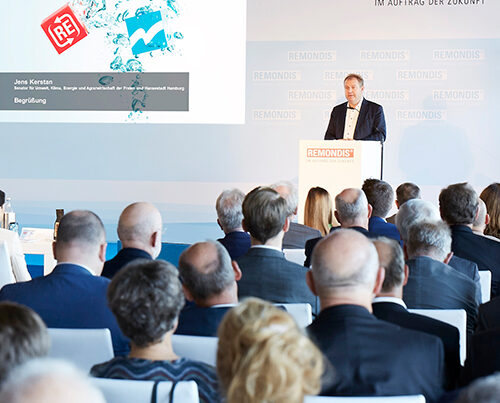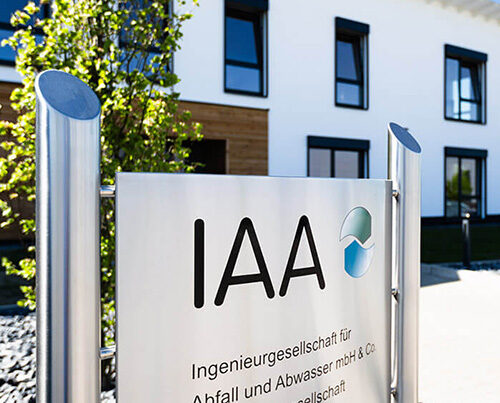We are in a time of ever-increasing energy prices. In these times, it is more important than ever to become a little more independent in this respect. This also applies to water supply and wastewater treatment. Thus, as part of the celebrations for the 70th anniversary of the Tettau waterworks, a new photovoltaic system in combination with a battery storage system was put into operation on 22 March – with the aim of coming one step closer to being fully climate-friendly.
The Tettau waterworks is the largest waterworks in Brandenburg and is run by Wasserverband Lausitz Betriebsführungs GmbH, or WAL-Betrieb for short, which is a subsidiary of REMONDIS Aqua. It not only supplies the entire WAL association area but also neighbouring areas. In 2019, the capacity of the waterworks was doubled by building an extension. The commissioning of the photovoltaic system has now been followed by a further step towards climate friendliness.
In the presence of many city and municipal leaders of the association area and other guests, the symbolic start of the plant was ceremoniously carried out by Christoph Maschek, Technical Controlling WAL, Thomas Fürl, Managing Director WAL-Betrieb, Dr. Roland Socher, Chairman of the Association WAL, and Kersten Sickert, Chairman of the Association Assembly (from left to right).
The solar park at Brandenburg’s largest waterworks in Tettau
The photovoltaic system that has been installed now makes it possible to supply the waterworks self-sufficiently. With the 192 battery modules, which automatically switch to self-sufficiency in the event of a failure of the public energy supply, scenarios such as a blackout are also secured. Consequently, the start and operation of the photovoltaic system as well as the emergency operation of the waterworks is guaranteed, the so-called black start capability.
With the generation of electrical energy, the plant covers about 1/3 of the total demand of the plant. As a result, in addition to about 50,000 euros, about 1 million KWh of grid electricity can also be saved per year.
A large figure, which Kersten Sickert, Chairman of the Association Assembly, explains as follows: “For 1 KWh of electricity arriving in Tettau from the coal-fired power plants in the region, 1 kg of lignite is needed. If we now save 1 million KWh of electricity with your photovoltaic system, in the end we also save 1 million kg of lignite. Calculated down to a lorry, this would add up to a distance from Tettau to the neighbouring Frauendorf.”
In addition to coal, carbon dioxide is also saved with this new plant. In total, about 700 tonnes. The new plant in Tettau does therefore not only convince in terms of ensuring the emergency operation of the waterworks, but also in terms of climate protection.
“For 1 KWh of electricity arriving in Tettau from the coal-fired power plants in the region, 1 kg of lignite is needed. If we now save 1 million KWh of electricity with your photovoltaic system, in the end we also save 1 million kg of lignite. Calculated down to a lorry, this would add up to a distance from Tettau to the neighbouring Frauendorf.”
Kersten Sickert, Chairman of the Association Assembly
Image credits: image 1-2: © WAL-Betrieb











